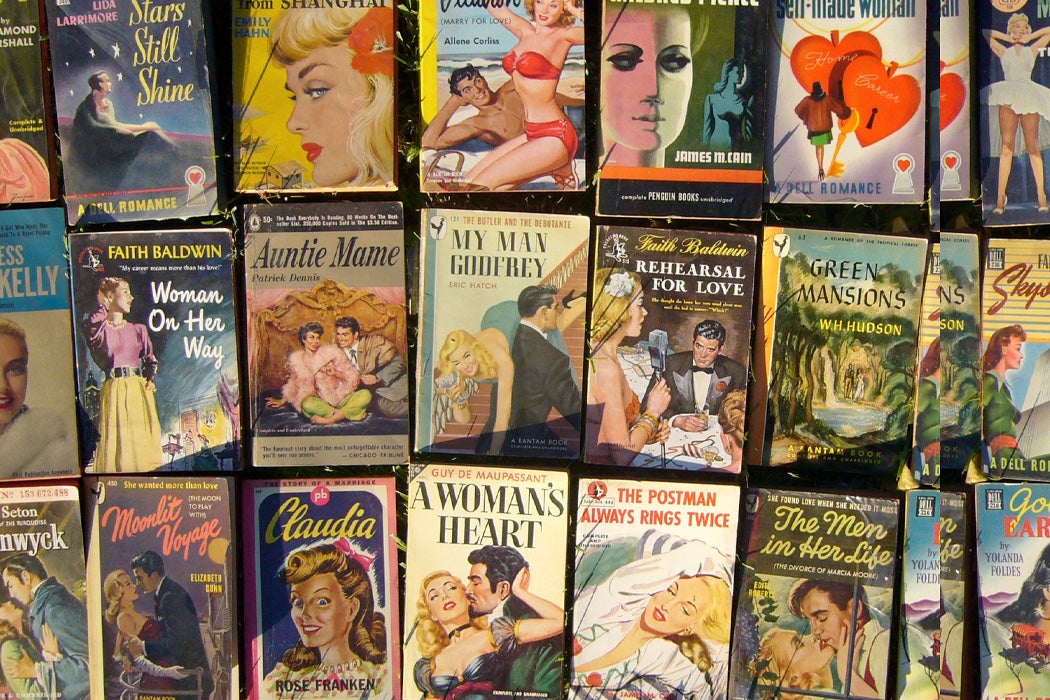Although audiences have enjoyed reading about love since the moment the written word could record it—the oldest recorded love poem was found chiselled on a 4,000 year old Ancient Sumerian clay tablet—the romance genre has a decided lack of cultural clout.
According to scholar Ann M. Eike in the Journal of Cultural Economics, the romance novel has had a turbulent history of popularity and cultural regard. From the late eighteenth century to the Victorian period, romantic novels enjoyed great success. In the roaring ’20s, women’s growing independence saw American audiences spending more money on romances. In the decades that followed, books like Gone With the Wind and Forever Amber flew off shelves. By the 1960s, changing social mores tarnished the reputation of traditional romances, with their romantic plots and archetypes. Production numbers began to dwindle as they fell out of publishers’ favor.
Then, in 1972, The Flame and the Flower—considered the first modern “bodice ripper”—was published by Avon. The novel, written by Midwestern homemaker Kathleen E. Woodiwiss, was a gamble. In comparison to its predecessors, this book’s cover was overtly sexual, the sex scenes occurred early on (within the first thirty pages), the subject matter was graphic, and the scenes exotic. The book was published in paperback, after having been rejected by multiple hardback publishers.
By 1977, it had sold 2,580,000 copies.
Avon repeated the success with Sweet Savage Love, published in 1974. The success of these two new novels ushered in the quick and furious production of the paperback novels we know today.
According to Eike, by the 1980s, romance had bloated and become a “hydra-headed genre,” comprised of many sub-genres. And by the end of the twentieth century, the glut of paperbacks on the market had done a number of the genre’s reputation, and romance novels were reduced in cultural standing to little more than “bubble gum for the mind,” according to Eike.
Once a Week
But for readers, that may have been exactly what they wanted. Romance readers tended to represent a specific market: married women between 25 and 44, employed, who were less likely to be drawn in by television. For these women, the paperback novels were convenient. They were readily available in stores and at newstands. Unlike television, they were able to be squeezed into whatever time was available. Eike writes:
The reader is neither interrupted by commercials nor penalized for missing segments of a continuing serial which has complicated subplots, and can pick up the story easily if interrupted by phone calls or quarreling children… Compared with paying for a ticket to the movies or even a fast food meal, the romance novel is relatively inexpensive as a “treat.”
Viewed this way, the “trashy” romance novel becomes something significantly more. The market had adapted to suit harried, busy women who needed an quick and reliable escape. Today, romance has endured as a wildly successful genre. In the most obvious example, the Fifty Shades of Grey series secured author E.L James a net worth of over 50 million, according to CityLab. The average income for a romance writer has tripled in the digital age—an especially impressive feat in the age that finds writers of other genres struggling.







